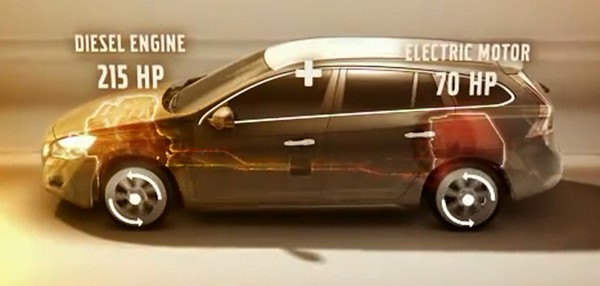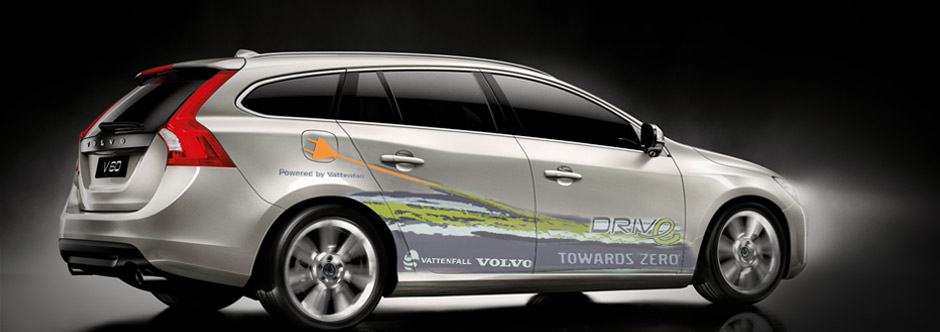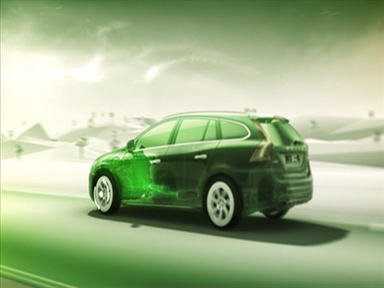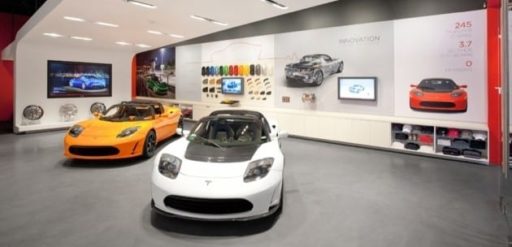Volvo releases more details on 124MPG V60 plug-in with new iPhone app and a sneak preview of the production model arriving in 2012.The world’s first diesel plug-in hybrid comes with three different driving modes at the push of a button and driver chooses the preferred driving mode via three buttons on the instrument panel: Pure, Hybrid and Power…….
Volvo Cars will be unveiling the V60 Plug-in Hybrid – a virtually production-ready car with carbon dioxide emissions below 50 g/km.The Plug-in Hybrid which will be launched on the market in 2012 is the result of close cooperation between Volvo Cars and Swedish energy supplier Vattenfall.In January 2007, Volvo Cars and Vattenfall launched an industrial partnership whose aim was to test and develop plug-in technology. This cross-border initiative resulted in the foundation of a jointly owned company – V2 Plug-in-Hybrid Vehicle Partnership.Development work has been jointly financed. Now the project is on the threshold of introducing the market’s first diesel plug-in hybrid. It’s an attractive car type that gives the user access to the very best properties of both an electric car and a diesel-powered vehicle: very low fuel consumption and CO2 levels, combined with long range and high performance.
When powered solely by electricity, the V60 Plug-in Hybrid has a range of up to 50 kilometres. The car’s total operating range is up to 1200 km. Carbon dioxide emissions will be an average of 49 grams per kilometre (EU Combined) and fuel consumption will be 1.9 litres per 100 km.The cost of the battery pack means the plug-in hybrid will be more expensive to buy than a Volvo V60 with a conventional combustion engine. On the other hand, fuel costs will be one-third compared with a conventional combustion engine. The cost of running on electricity in Sweden has been calculated at about 2.50 kronor per 10 km. The exact cost will vary from one market to another.The plug-in hybrid can be charged via a regular household electricity socket at home or when parked somewhere else. Charging time is about five hours if the car is recharged at home.
An electric motor is almost four times as efficient as a regular combustion engine. This means that an electrically powered car consumes less energy and thus produces lower emissions, even if it is powered by a blend of electricity sources that include fossil fuels.European electricity production has an emission ceiling. This means that even if all vehicles were to run on electricity, electricity production itself is not allowed to produce more carbon dioxide. This emission ceiling will be gradually lowered over a period of time.Electricity is an excellent source of energy. It does not risk running out, and it can be produced virtually without any CO2 emissions. For instance, Vattenfall is working towards halving the company’s emissions by 2030 and becoming climate-neutral by 2050.
Emissions from millions of exhaust tailpipes are transferred to a small number of production facilities which are easier to control and which will operate on the basis of the EU’s trade in emission rights, something that does not apply to the transport sector at present.Electric vehicles use relatively little electricity and the increase in consumption will be more than covered by ambitious expansion plans for renewable energy sources throughout Europe. A single wind-power station, for instance, produces sufficient renewable energy to power 3,000 electric cars. Vattenfall will offer buyers of the plug-in hybrid a contract including electricity from renewable sources.Electricity production is undergoing rapid expansion. Wind-power is being commercially introduced on a large scale and is continuing to expand, biofuels will replace fossil fuels on a broad front, wave-power is expected to enter commercial operation within ten years and new technology to clean CO2 emissions from coal-fired power stations is currently under development.At Volvo Cars, work progresses on the V60 Plug-in Hybrid in parallel with development of the Volvo C30 Electric which runs entirely on electricity.These two car types complement one another. With a plug-in hybrid the driver is entirely independent of recharging stations when driving long distances.
Check Out The Videos Below :
[ttjad keyword=”auto”]






